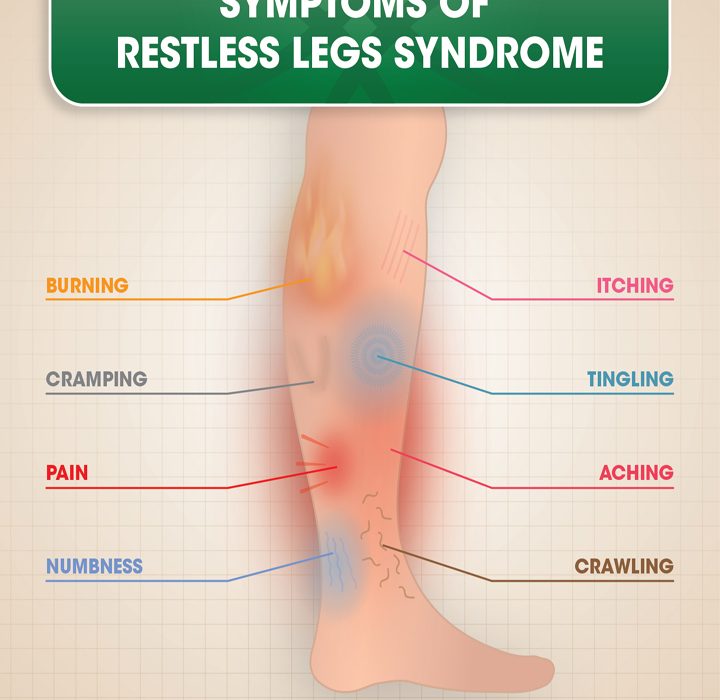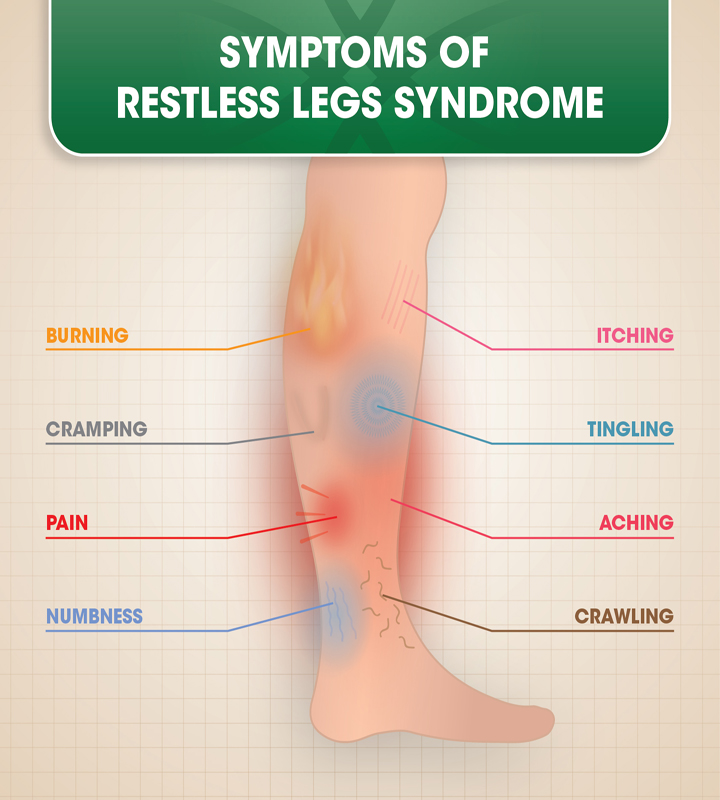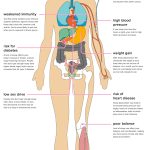If you’ve ever experienced the overwhelming urge to move your legs, especially when you’re trying to relax or sleep, you might be familiar with the mysterious condition known as Restless Leg Syndrome (RLS). But how exactly is RLS diagnosed? In this article, we’ll delve into the diagnostic process for RLS and explore the various methods used by healthcare professionals to identify this uncomfortable condition.
When it comes to diagnosing Restless Leg Syndrome, there isn’t a one-size-fits-all approach. Healthcare providers typically rely on a combination of patient history, physical examination, and specific criteria set by medical organizations. Understanding the symptoms and triggers of RLS is crucial for an accurate diagnosis. By asking targeted questions about your symptoms, such as the sensation you experience, when it occurs, and how it affects your daily life, doctors can gather important information to guide their diagnosis. Additionally, a physical examination may be conducted to rule out other potential causes and assess the presence of any underlying conditions related to RLS. So, let’s dive deeper into the diagnostic journey of Restless Leg Syndrome and discover the steps that healthcare professionals take to unravel this puzzling disorder.
Restless Leg Syndrome: Understanding Diagnosis
Restless Leg Syndrome (RLS) is a neurological disorder that affects millions of people worldwide. It is characterized by an irresistible urge to move the legs, often accompanied by uncomfortable sensations. If you suspect you have RLS, it is important to understand how it is diagnosed so that you can seek appropriate treatment. In this article, we will explore the various methods and criteria used by healthcare professionals to diagnose RLS.
Medical History and Physical Examination
The first step in diagnosing RLS is a thorough medical history and physical examination. Your healthcare provider will ask you about your symptoms, including the frequency and intensity of the leg sensations, and any factors that seem to trigger or worsen them. They will also inquire about your sleep patterns and any family history of RLS. During the physical examination, your healthcare provider will look for signs of other conditions that may mimic RLS, such as peripheral neuropathy or varicose veins.
If your medical history and physical examination suggest RLS, further tests may be recommended to confirm the diagnosis and rule out other potential causes of your symptoms.
Diagnostic Criteria
The diagnosis of RLS is primarily based on clinical criteria established by the International Restless Legs Syndrome Study Group. These criteria include four essential features:
1. An urge to move the legs, usually accompanied by uncomfortable sensations.
2. The urge to move and the uncomfortable sensations begin or worsen during periods of rest or inactivity.
3. The urge to move and the uncomfortable sensations are partially or totally relieved by movement.
4. The urge to move and the uncomfortable sensations are worse in the evening or at night compared to during the day.
It is important to note that these criteria are not definitive, and healthcare providers may consider additional factors to make an accurate diagnosis.
Polysomnography
Polysomnography is a sleep study that may be recommended to evaluate the impact of RLS on sleep quality. During this study, various physiological parameters are monitored, including brain waves, eye movements, muscle activity, heart rhythm, and breathing patterns. The data collected during polysomnography can provide valuable information about the severity of RLS symptoms and their impact on sleep.
Laboratory Tests
In some cases, laboratory tests may be ordered to rule out other conditions that may cause similar symptoms. These tests may include blood tests to check for iron deficiency, kidney function, and other potential underlying causes. Additionally, a neurological examination may be performed to assess nerve function and rule out other neurological disorders.
Diagnostic Tools: Questionnaires and Rating Scales
To aid in the diagnosis of RLS, healthcare providers may use questionnaires and rating scales. These tools help assess the severity of RLS symptoms, their impact on daily life, and the effectiveness of treatment interventions. They can also be used to monitor changes in symptoms over time.
Seeking Professional Help
If you suspect you have Restless Leg Syndrome, it is important to consult with a healthcare professional. They will be able to evaluate your symptoms, conduct the necessary tests, and provide a proper diagnosis. Remember, self-diagnosis can lead to unnecessary worry or delay in receiving appropriate treatment. Seeking professional help will ensure that you receive the care and support you need to manage your symptoms effectively.
Managing Restless Leg Syndrome
Once diagnosed with RLS, there are several treatment options available to manage the symptoms. These may include lifestyle modifications, such as regular exercise, avoiding caffeine and nicotine, and establishing a consistent sleep routine. Medications, such as dopamine agonists, opioids, and anticonvulsants, may also be prescribed to alleviate symptoms and improve sleep quality.
In addition to medical interventions, alternative therapies like massage, acupuncture, and yoga have shown promise in providing relief for some individuals with RLS. It is essential to work closely with your healthcare provider to determine the best treatment approach for your specific situation.
Support and Coping Strategies
Living with Restless Leg Syndrome can be challenging, but you are not alone. Support groups and online communities offer a valuable space to connect with others who share similar experiences and provide mutual support. Sharing your journey, seeking advice, and learning from others can be immensely helpful in coping with the physical and emotional aspects of RLS.
Additionally, practicing stress management techniques, such as mindfulness and relaxation exercises, can help reduce the impact of RLS on your overall well-being. Prioritizing self-care, maintaining a healthy lifestyle, and communicating openly with your loved ones about your condition can also contribute to a more positive and fulfilling life with RLS.
In conclusion, the diagnosis of Restless Leg Syndrome involves a comprehensive evaluation of medical history, physical examination, and, if necessary, additional tests. The diagnostic criteria established by the International Restless Legs Syndrome Study Group serve as a guideline for healthcare providers. Seeking professional help is crucial to receiving an accurate diagnosis and developing an effective treatment plan. Remember, managing RLS requires a holistic approach, combining medical interventions, lifestyle modifications, and support from others. With the right support and strategies, individuals with RLS can lead fulfilling lives and minimize the impact of the condition on their well-being.
Key Takeaways: How is Restless Leg Syndrome diagnosed?
- Restless Leg Syndrome is diagnosed based on symptoms reported by the patient.
- There is no specific test for diagnosing Restless Leg Syndrome.
- Doctors may perform a physical examination and review medical history to rule out other conditions.
- Keeping a sleep diary and documenting symptoms can help in the diagnosis process.
- In some cases, blood tests may be done to check for underlying causes of Restless Leg Syndrome.
Frequently Asked Questions
What are the common symptoms of Restless Leg Syndrome?
Restless Leg Syndrome (RLS) is a neurological disorder characterized by an irresistible urge to move the legs, usually accompanied by uncomfortable sensations. The symptoms of RLS typically worsen during periods of rest or inactivity, such as when sitting or lying down. Common sensations experienced by individuals with RLS include throbbing, itching, creeping, or crawling feelings in the legs. These sensations are often relieved temporarily by movement or stretching. RLS symptoms can vary in severity and may range from mild to severe, causing significant disruption to sleep and daily activities.
In addition to the physical symptoms, RLS can also lead to emotional distress, including anxiety and depression. It is important to consult a healthcare professional if you suspect you may have RLS, as proper diagnosis and treatment can provide relief from these distressing symptoms.
What are the criteria for diagnosing Restless Leg Syndrome?
Diagnosing Restless Leg Syndrome involves assessing the presence of four key criteria, as outlined by the International Restless Legs Syndrome Study Group. These criteria include:
1. An urge to move the legs, usually accompanied by uncomfortable sensations.
2. The urge to move and the uncomfortable sensations occur or worsen during periods of rest or inactivity.
3. Movement provides temporary relief from the uncomfortable sensations.
4. The symptoms are worse or occur exclusively in the evening or night.
If you experience these symptoms, it is important to consult a healthcare professional for further evaluation and diagnosis.
What tests are performed to diagnose Restless Leg Syndrome?
There are no specific tests to diagnose Restless Leg Syndrome. The diagnosis is primarily based on a thorough evaluation of your symptoms and medical history. Your healthcare professional will ask about the nature and frequency of your symptoms, as well as any factors that may worsen or alleviate them.
In some cases, additional tests may be done to rule out other conditions that may present with similar symptoms. These tests may include blood tests to check for iron deficiency or other underlying medical conditions, as well as a sleep study to assess the quality and patterns of your sleep. However, these tests are not necessary for all individuals with RLS and are typically reserved for cases where the diagnosis is unclear or if there are additional symptoms or risk factors present.
Can Restless Leg Syndrome be diagnosed based on self-reporting?
While self-reporting can provide valuable information about your symptoms, it is not sufficient to establish a diagnosis of Restless Leg Syndrome. A healthcare professional will need to evaluate your symptoms and medical history to make an accurate diagnosis. It is important to consult a healthcare professional if you suspect you may have RLS, as they can provide appropriate evaluation and guidance for treatment.
Keep in mind that self-reporting can still be helpful in providing information to your healthcare professional, as it can give them insight into the nature and severity of your symptoms. Be sure to communicate any relevant details about your symptoms, triggers, and any factors that may worsen or alleviate them.
What healthcare professionals can diagnose and treat Restless Leg Syndrome?
Restless Leg Syndrome can be diagnosed and treated by various healthcare professionals, including:
– Primary care physicians: They can conduct an initial evaluation and provide basic management of RLS symptoms.
– Neurologists: These specialists have expertise in diagnosing and treating neurological disorders, including RLS.
– Sleep specialists: As RLS symptoms often disrupt sleep, sleep specialists can provide comprehensive evaluation and treatment options.
– Movement disorder specialists: These specialists have specialized knowledge in movement disorders, including RLS, and can offer advanced management options.
It is important to consult with the appropriate healthcare professional based on your specific symptoms and needs. They can guide you through the diagnostic process and develop an individualized treatment plan to manage your RLS symptoms effectively.
Restless Legs Syndrome (RLS) | Causes, Signs & Symptoms, Diagnosis, Treatment
Final Summary: How is Restless Leg Syndrome diagnosed?
After exploring the various methods used to diagnose Restless Leg Syndrome (RLS), it is clear that a combination of clinical evaluation, medical history assessment, and sleep studies play a crucial role in identifying this condition. While there isn’t a definitive test for RLS, healthcare professionals rely on the presence of specific symptoms and exclusion of other possible causes to make an accurate diagnosis.
During the clinical evaluation, doctors may examine the patient’s legs for any visible signs of discomfort or involuntary movements, as well as inquire about the frequency, intensity, and duration of symptoms. They will also consider the patient’s medical history, as certain underlying conditions or medications can contribute to RLS. Additionally, sleep studies can be conducted to assess the patient’s sleep patterns and detect any disruptions caused by RLS.
In conclusion, diagnosing Restless Leg Syndrome involves a comprehensive approach that takes into account the patient’s symptoms, medical history, and sleep patterns. While there is no specific test to confirm RLS, healthcare professionals use their expertise to evaluate and exclude other potential causes. By understanding the diagnostic process, individuals experiencing restless legs can seek appropriate treatment and find relief from this uncomfortable condition.




